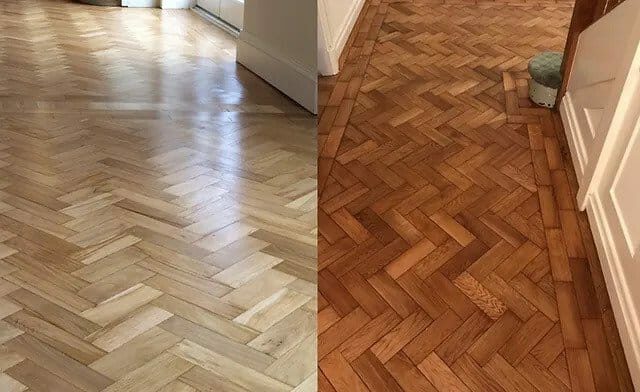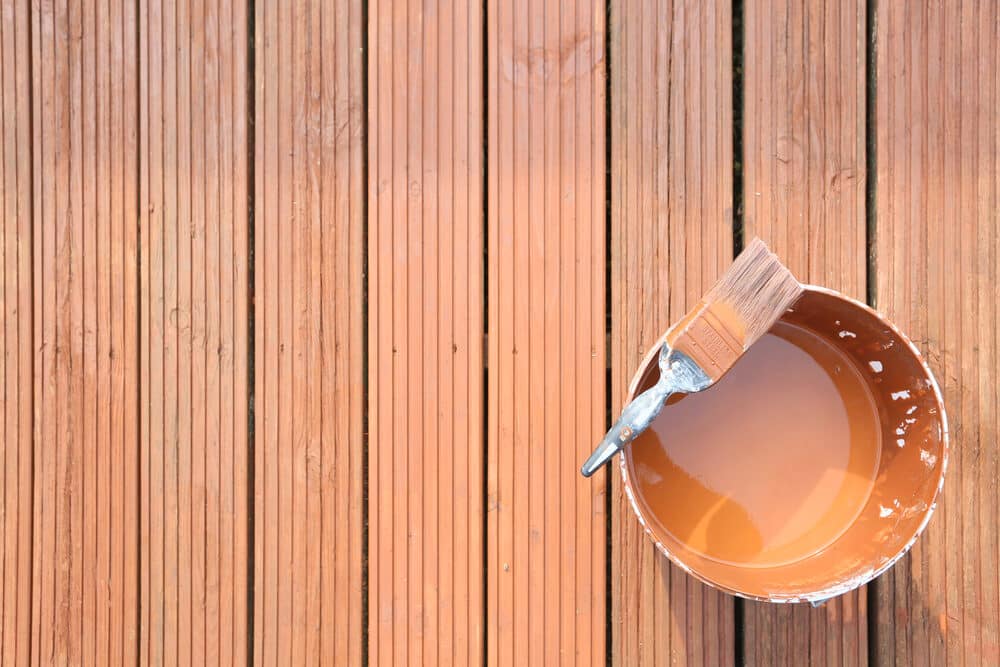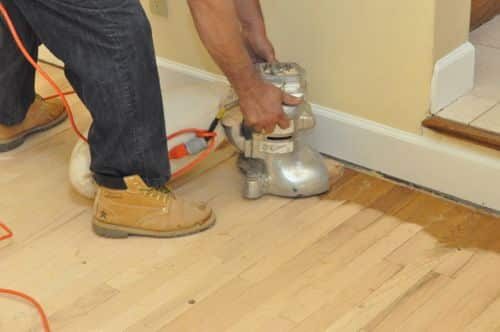London:
Nationwide:
Sanding and Hand Scraping Combination Techniques for Custom Wood Floors
Posted on August 31, 2023
Floor sanding techniques
Sanding and Hand Scraping: The Ultimate Guide to Custom Wood Floors
Custom wood floors remain a top choice for homeowners passionate about achieving that bespoke touch in their spaces. Among the multitude of finishes available, combining sanding and hand scraping techniques has recently witnessed a resurgence in popularity. This marriage of age-old artistry with modern finesse results in an enchantingly timeless finish, making every floor uniquely yours.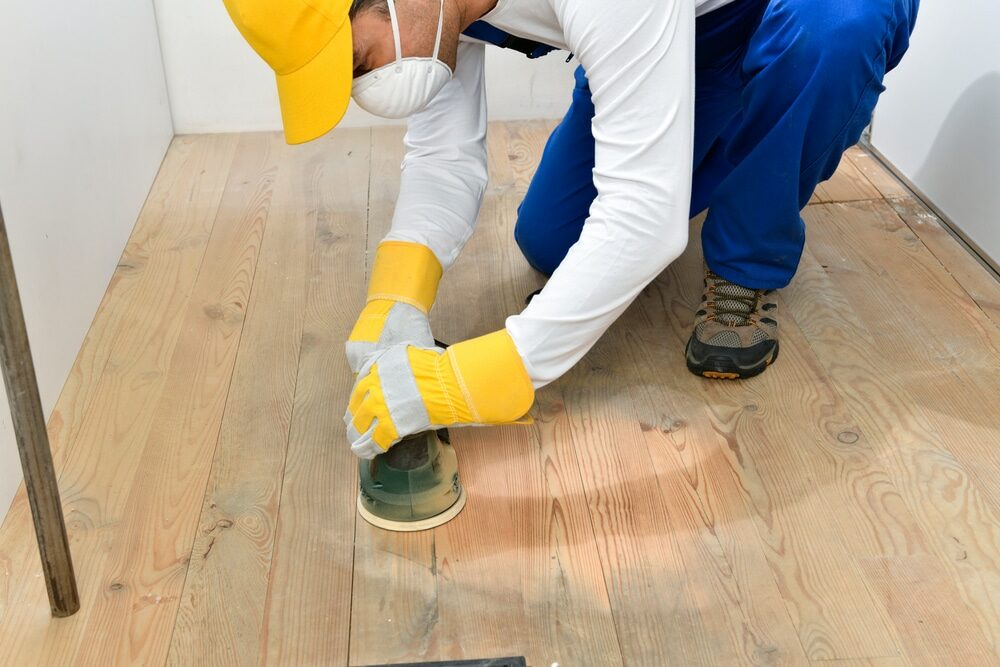
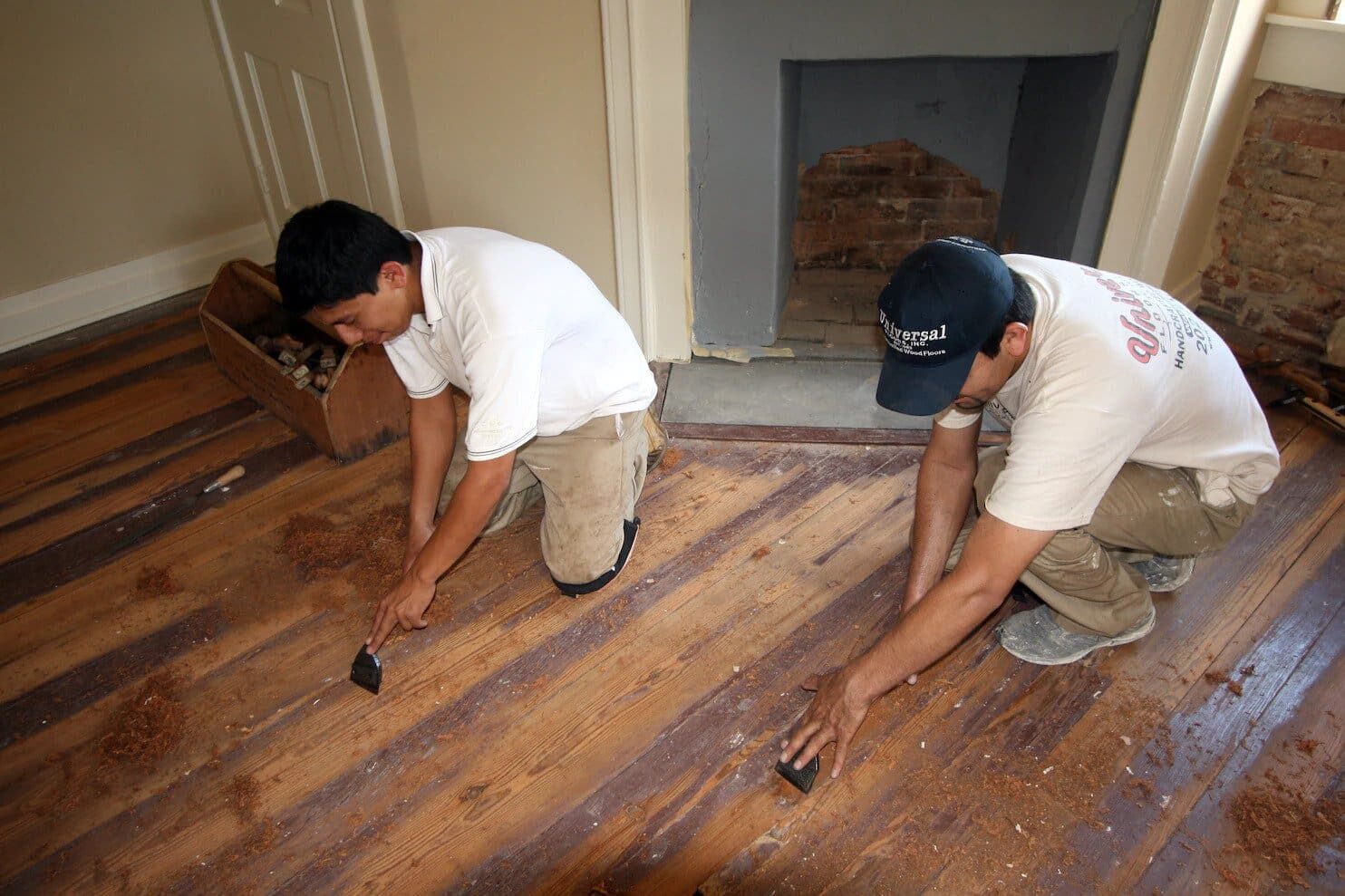
The Allure of Custom Wood Floors
With their enduring appeal and ability to complement both contemporary and traditional interiors, wooden floors never go out of style. Their versatility allows homeowners to imprint personal tales on their planks, making them more than just a functional aspect of the home but a canvas of personal style and history.The basics of sanding
Before we dive into the intricate details of hand scraping, we must grasp the basic sanding principles.
Equipment and Grain:
Most professionals recommend using a drum or belt sander for large areas, accompanied by an edger to reach those more tricky perimeters. While equipment matters, the keen eye for the direction of the wood grain sets a professional apart. Always sand in the direction of the grain to avoid unsightly cross-grain scratches.Grit Sequence:
Wood floors, depending on their initial condition, might require multiple sanding passes, starting with a coarse grit (40–60) and graduating to a fine one (100–120). This sequential approach ensures a smooth surface, ready for the next phase of hand scraping.Hand Scraping: The Artistry Behind the Aesthetics
Once the floor has been meticulously sanded, it’s time for the pièce de résistance: hand scraping. This traditional technique involves manually curving and contouring the wood to reveal its natural, rustic charm.Tools of the Trade:
The main tool is a scraping blade. Depending on the desired effect, craftsmen might choose blades of varying widths and edge shapes. The key lies in the wrist’s movement, a delicate dance that requires patience, precision, and passion.Distressing for Authenticity:
For homeowners desiring a genuinely antique look, additional distressing can be added. This might involve the addition of wormholes, softened edges, or even pegs. But caution is advised; over-distressing can make the floor look contrived rather than authentically aged.Blending the Techniques
It’s not about choosing sanding over hand scraping, or vice versa. It’s about appreciating the strengths of both techniques and blending them harmoniously.The sequence matters:
Always start with sanding. This ensures that the floor is level, with any old coatings or blemishes removed. Hand scraping is then applied, enhancing the wood’s natural characteristics and allowing the grain and knots to shine, resulting in that sought-after custom finish.Final Finishing Touches:
After sanding and scraping, the floor should be treated with a sealant, typically an oil- or water-based polyurethane. This seals in the beauty while providing a protective layer against the rigours of daily life.Advantages of This Combination Approach
- Customization: No two floors will ever be the same. The unique contours and patterns make it an artistic feature of your home.
- Value Addition: A custom wood floor isn’t just aesthetically pleasing; it adds tangible value to your property.
- Durability: With the blend of these techniques, the floor is prepared to withstand heavy foot traffic while masking minor dents and scratches.
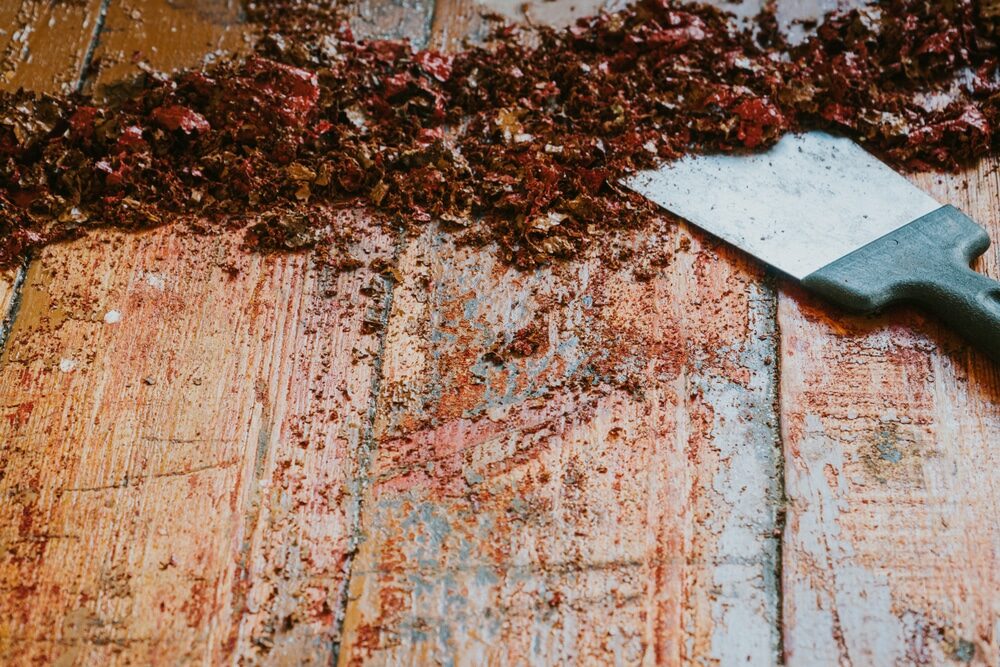
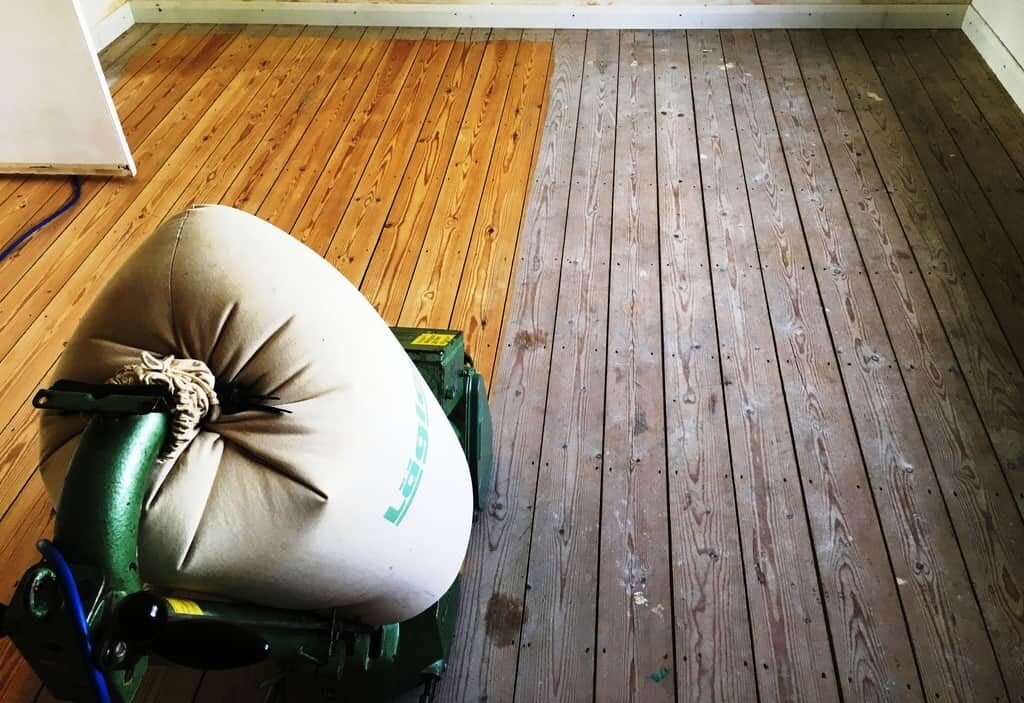
The Tactile Sensations of a Hand-Crafted Floor
There’s a tangible difference between walking on a mass-produced floor and one that’s been meticulously crafted through the combined techniques of sanding and hand scraping.A Journey for the Feet:
Every step on a hand-crafted floor offers a tactile journey. The slight undulations, the subtle textures, and the warmth of the wood beneath can’t be replicated by machines. There’s a richness to its touch, a soft whisper of its intricate craftsmanship, that speaks volumes to those who care to listen.Barefoot Beauty:
For those who love wandering barefoot across their home, a hand-scraped and sanded wooden floor is pure pleasure. It’s akin to feeling a piece of pure silk versus synthetic fabric. There’s an organic, genuine sensation that’s both grounding and luxurious.Sustainability and tradition
In today’s age, where sustainability is more than a buzzword, choosing a hand-scraped and sanded floor can be a nod to more eco-friendly choices.Reclaiming and repurposing:
Many craftsmen source reclaimed wood for their projects. This not only offers an authentic, aged look but is also an eco-conscious choice. Using reclaimed wood means fewer trees are felled, and older pieces of timber are given a new lease on life.Preserving Skills for Future Generations:
Opting for such a floor also supports the artisans and craftsmen who possess these age-old skills. In an era where mass production reigns supreme, choosing handcrafted products supports the tradition, ensuring these skills are passed down and not lost in the annals of time.In Conclusion
Combining sanding and hand scraping isn’t merely about laying a floor; it’s about laying down a legacy. A floor that tells a story, a testament to the homeowner’s appreciation for craftsmanship, and a nod to traditions of yore. When done right, it’s a floor that stands the test of time, both in style and endurance. So, consider this combination as you contemplate the ideal floor for your home. It promises a floor and a canvas enriched with tales of yesteryear and the promise of many tomorrows.Some Useful Links:
- Stairs Sanding & Refinishing
- Floor Sanding Services
- School Floor Sanding
- Wood Floor Restorations
- Wood Floor Repairs
- Wood Floor Polishing
More from our Blog:
Hand Scraping Techniques for Different Types of Hardwood Floors How to Hand Scrape Floors Safely and Effectively Hand Scraping Floors: Reviving Antique Wood for a Vintage Look The History and Evolution of Hand Scraping Floors Hand Scraping for New Construction: Adding Character to Modern Spaces Pros and Cons of Hand Scraping Floors: Is It Right for You? DIY Hand Scraping: Tips for Refinishing Your Hardwood Floors Hand Scraping Floors: The Time-Tested Technique for Beautiful Results
Sanding
We provide virtually dust-free sanding with our continuous belt machinery with mobile extraction units, giving you a safer environment for your family.
Oiling
This organic finish not only adds beauty to your home but also has exceptional water-repellent characteristics, making it easier to clean and maintain.
Waxing
This natural floor finish offers the softest and most mellow appearance – and leaves your floor able to breath.
Buffing
Using soft buffing machines (and hand-polishing where required) will bring a wonderful sheen to your newly-finished floor.
Repairs
We offer a full assessment of your wooden floors to determine what repairs are needed to provide the perfect working surface for the later stages of sanding, staining and sealing.
Restoration
We offer a comprehensive restoration process designed to address floors that are improperly fitted or damaged over time through wear and tear.
Request a fixed price quote for your wood floor restoration now
Simply enter your postcode below to get started.
Services
Wood Floor Sanding Wood Floor Restoration Wood Floor Scratch Repair Squeaky Wood Floor Repair Parquet Floor Sanding Parquet Floor Restoration Commercial Floor Sanding Church Floor Sanding Community Centre Floor Sanding School Floor Sanding Gap Filling Gap Filling with ResinCopyright © Mr Sander®
Privacy & Cookies Terms & Conditions Complaints Procedure Cancellation Rights Sitemap